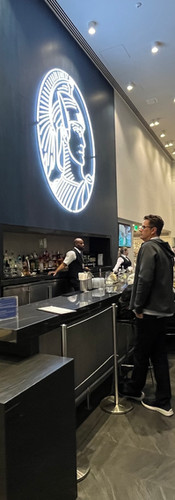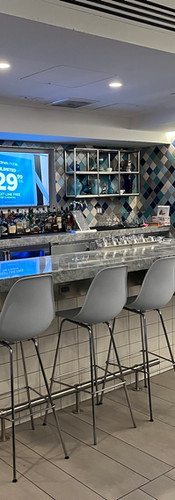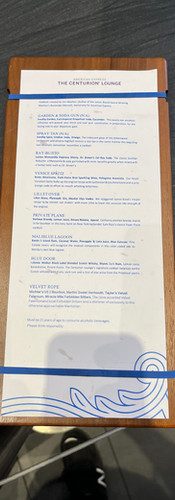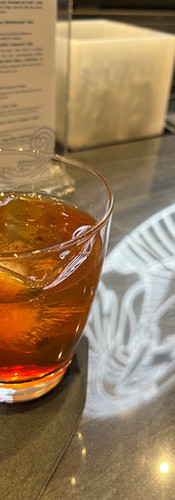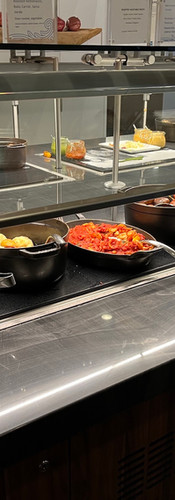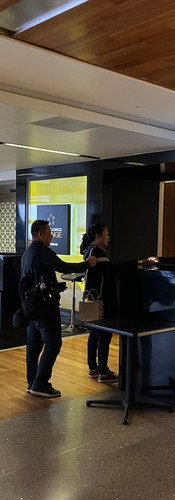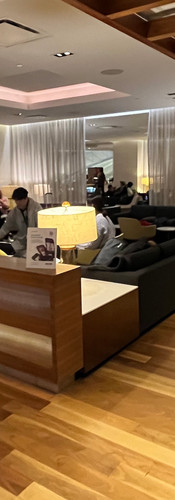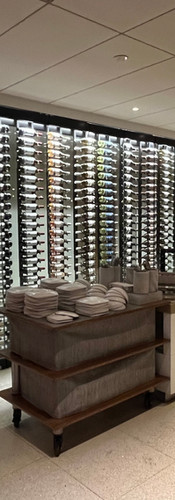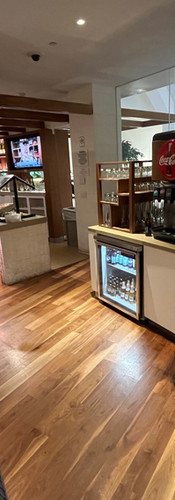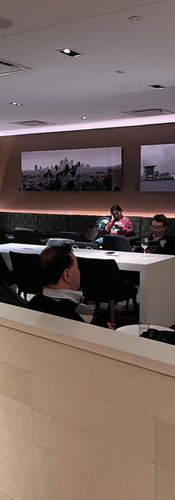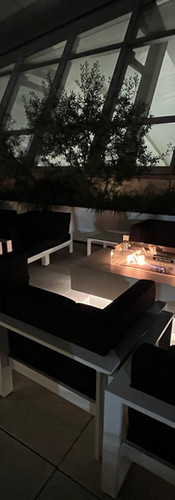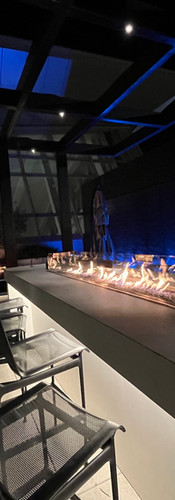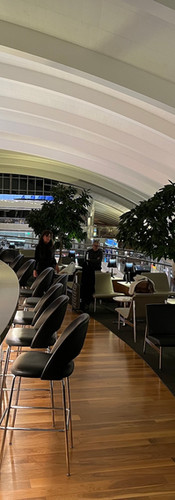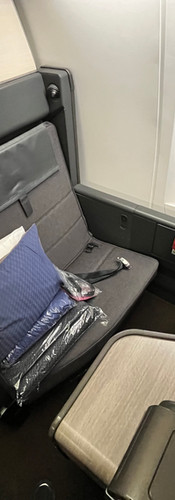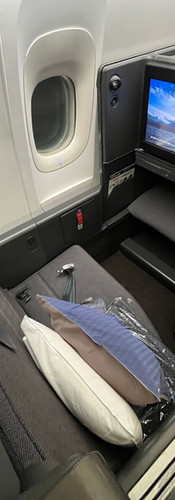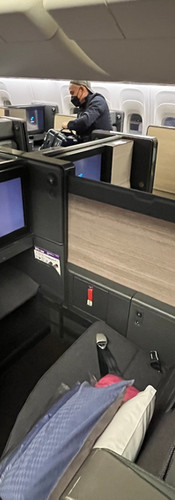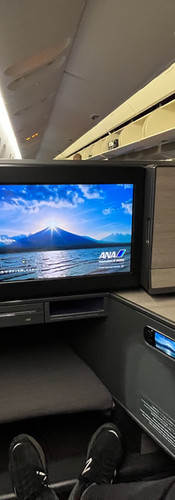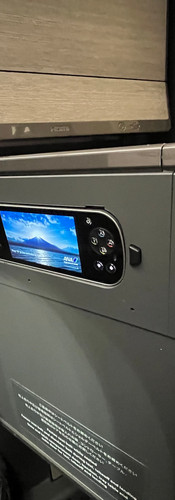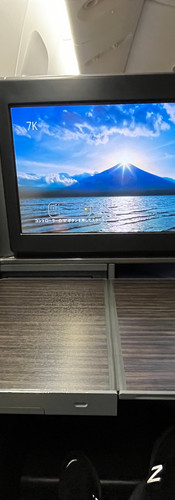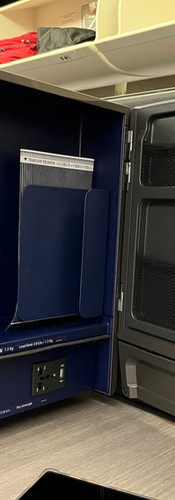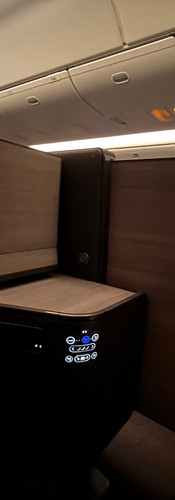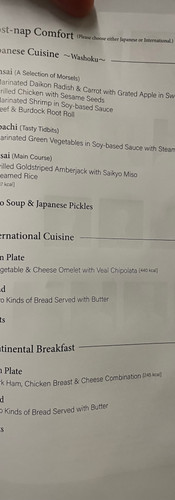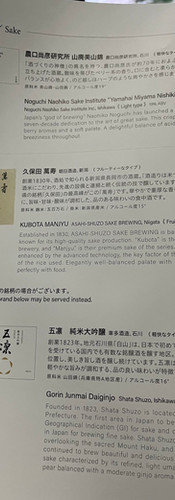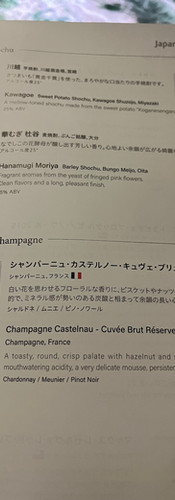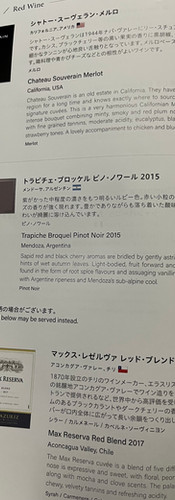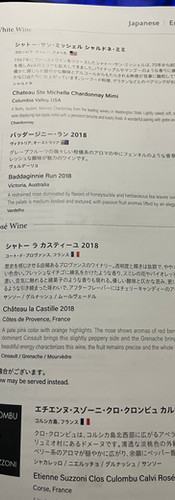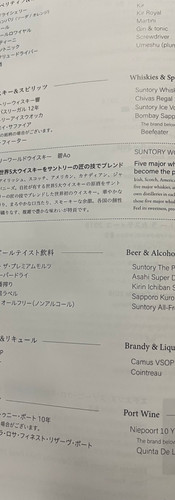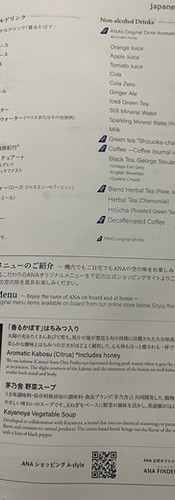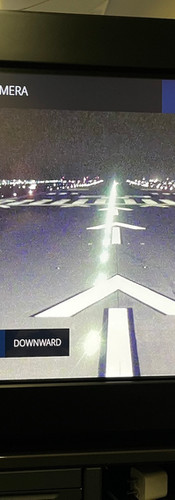Review: ANA's "The Room" Business Class, LAX-Tokyo, Boeing 777
- Graham
- May 1, 2023
- 6 min read
Updated: Oct 6, 2023
Nearly any list of the top business-class products in the air today puts ANA's "The Room" concept near the top, and I was glad to see it available for a recent trip to Singapore. Here, I'll give you a look inside "The Room", and in Part Two I'll compare it to ANA's 'regular' long-haul business product.
Using Aeroplan miles and a Priority Reward, I was able to book LAX-Tokyo-Singapore-Dubai-London, all in business class, for 93,750 points and $295 CAD in fees and taxes. Availability is hit-and-miss to be sure, especially as tourist demand has surged following Japan's post-pandemic reopening, but in this case I was able to change an existing reward on Air Canada metal when ANA released space on a Room-equipped 777 at three weeks before departure.
Part One - Finding "The Room"
Only certain ANA aircraft have been upgraded to feature "The Room", and these do move around a bit as flight schedules change throughout the year. So far, "The Room" has only been installed on ANA's Boeing 777 aircraft; you definitely won't find it on their 787 Dreamliners or any of their Airbus products in the near future, and as I write this, only nine out of the fifteen 777s in ANA's fleet have been upgraded to "The Room". ANA is expected to take delivery of its new 777-9s with "The Room" installed, but no set timetable has been announced for retrofitting the other existing aircraft.
So, just booking an ANA 777 isn't enough, you've got to do a little sleuthing to confirm which aircraft is assigned to your flight. You can do this by looking up the same flight on ANA's website, or looking up the seat map of the aircraft assigned to your flight. I always use the ANA website for this to avoid any confusion, as sites like Seatguru can occasionally get mixed up when an airline operates the same aircraft type with more than one configuration.
This booking page and seatmap denotes a flight that is equipped with "The Room".
This booking page and seatmap denotes a flight that is not equipped with "The Room".
Generally speaking, flights from Tokyo to/from London and New York will feature "The Room", along with select flights to San Francisco and some winter-only service to Los Angeles and Chicago.
So, that said, let's head to the airport!
Part Two - LAX Departure
For my midnight departure from LAX, I appreciated ANA's detailed online menus noting that there wouldn't be a full meal service until a few hours before arrival in Tokyo. Armed with that knowledge, I had time to stop by the American Express Centurion Lounge for a cocktail, then head over to the Star Alliance Lounge for a quick bite before departure.
I've mostly given up on Centurion Lounges. They're too often badly overcrowded, with cleaning and catering staff struggling to keep up. That said, this visit was a pleasant surprise; there were always a handful of available seats, the bar wasn't too crowded, and the buffet was well-stocked and well-maintained. The real star of any Centurion is the bar, though; the cocktail list is always interesting, and the bartenders are always skilled and friendly, and this visit was no exception. When [Centurion] is good, it's very, very good.
Next up was the Star Alliance lounge; with well over a thousand premium-cabin and Star Alliance Gold passengers passing through each day, it's no small challenge to make an 18,000-square-foot space feel intimate and welcoming, but this does the job well. Soft mood lighting and the careful placement of elements like wine walls and translucent curtains turn one giant space into a collection of smaller nooks, each with a different look and feel. The "indoor terrace" overlooking the main terminal concourse would be the highlight of nearly any other airport lounge, but here the star of the show is the outdoor patio, complete with fire pits and dedicated bar. Very few airport lounges have anything to match it.
Catering is diverse and interesting, reflecting the variety of destinations served from LAX. At the end of the day it's still buffet food, but the build-your-own-pho bar was a real standout, including fresh sprouts and peppers to let each guest choose their spice level.
...but enough about the airport, let's go flying! Walking down to the gate, we find our ride to Tokyo tonight; one of ANA's Boeing 777-300s.

Part Three - The Seat
When ANA launched "The Room" in 2019, it was a revolution; French seating manufacturer Safran partnered with legendary Japanese architect Kengo Kuma to create a product that bridged the gap between business and first class. It was among the first business products to feature a full set of walls and a door, a welcome addition for those who value privacy while sleeping around two dozen strangers.
The cabin uses the same 1-2-1 layout common to nearly all newer long-haul business cabins, but disrupts the usual diagonal or herringbone layouts by facing half the seats backwards to use space more efficiently. This creates a "grid" layout in which adjacent passengers are either 'back to back' or 'feet to feet', which allows for a more spacious footwell than is possible when trying to fit Row 3's feet on the other side of a thin wall from Row 2's shoulders, as you'd see in a more traditional 1-2-1 pod layout.
The end result is a mini-suite that manages to feel both spacious and private, no small task in a space that's less than thirty square feet. The finishes are quiet and warm, and the build quality is especially evident in one of the only in-flight tray tables that actually feels like a sturdy working surface.
The most surprising aspect of The Room to me is that it's much lower to the floor than I expected; certainly understandable, in the context of Japanese interior design, but a bit awkward for my clumsy 6-foot frame to enter and exit. Throughout the flight, it definitely created more of a feeling of lounge and relaxation space, in comparison to existing airline pod types that tend to feel more like an armchair that also folds down into a bed.
There's plenty of storage space, and what's there is thoughtfully laid out, with dedicated spaces to place a phone or tablet while eating or sleeping, a cupboard designed to allow easy stowing of a laptop and noise-cancelling headphones, and a space under the ottoman large enough to store a big pair of shoes.
Folded down into bed mode, I found the suite spacious and comfortable, which is a big deal for those of us on the taller end of the spectrum. I had plenty of room to roll over, my feet weren't cramped into one position, and I ended up getting two or three hours of sleep more than usual on a late-night departure.
Part Four - Soft Product / Onboard Experience
ANA's reputation for excellent in-flight catering is well-earned, and this flight followed their long-haul program in which both Japanese and Western-styled menus are offered, along with a variety of lighter snack items on request outside of the scheduled meal service.
On a late-night departure like this one, the full meal service doesn't begin until most of the way through the flight. With this in mind, I planned out my schedule to have dinner in the lounge at LAX before departure and aim to sleep as early as possible after departure. This plan mostly worked, but if you're going to find yourself wide awake at four in the morning, it's really not the worst situation to have a nice hot bowl of Ippudo ramen magically appear in front of you.

I dozed on and off for another few hours, until the scheduled meal service began as we approached the northern coast of Japan. I'll nearly always opt for the local-cuisine option if offered the choice in-flight, and in this case the Japanese breakfast menu was a truly delicious departure from my usual routine, with a variety of fresh seafood bites that were each flavourful and well-prepared.

I didn't explore any further into the in-flight snacks menu, nor did I do much exploring into the excellent wine and whiskey menu, but for an 11-hour flight departing at bedtime and arriving at dawn, neither form of conspicuous over-consumption seemed terribly appealing, though I have had the opportunity to explore the world of Japanese whisky on previous adventures....
Part Five - In-Flight Entertainment
Any airline hoping to entice you into one of its seats for 10-15 hours straight, had better have a wide range of entertainment options to keep you occupied, and ANA delivers solidly. They offer the expected mix of Hollywood hits and classics alongside a selection of Japanese cinema and TV, but also a wide range of educational programming from historical and current-events to Japanese tax planning seminars, as well as live TV, children's programming and even Japanese-language radio plays.
The only real letdown was one found on nearly any airline these days; honestly, if you're only going to offer two episodes from the middle of the fourth season of a TV series, just don't bother offering it at all.
WiFi service was available throughout the flight, at reasonable rates competitive with ANA's peers, and of course anyone who's read my reviews in past knows I'm a sucker for a good airshow, which ANA delivers as well as anyone in the business.
Final Thoughts
I truly enjoyed every aspect of this flight, and it's easy to see why The Room is consistently rated as one of the best premium products in the sky today. As we'll get into in Part Two, it's certainly a better product than ANA's "regular" business class, which itself is one of the better products in the "regular" pod space.
The question is, is it "better enough" to be worth going out of your way to get it?
We'll have more on this in Part Two!
- G










